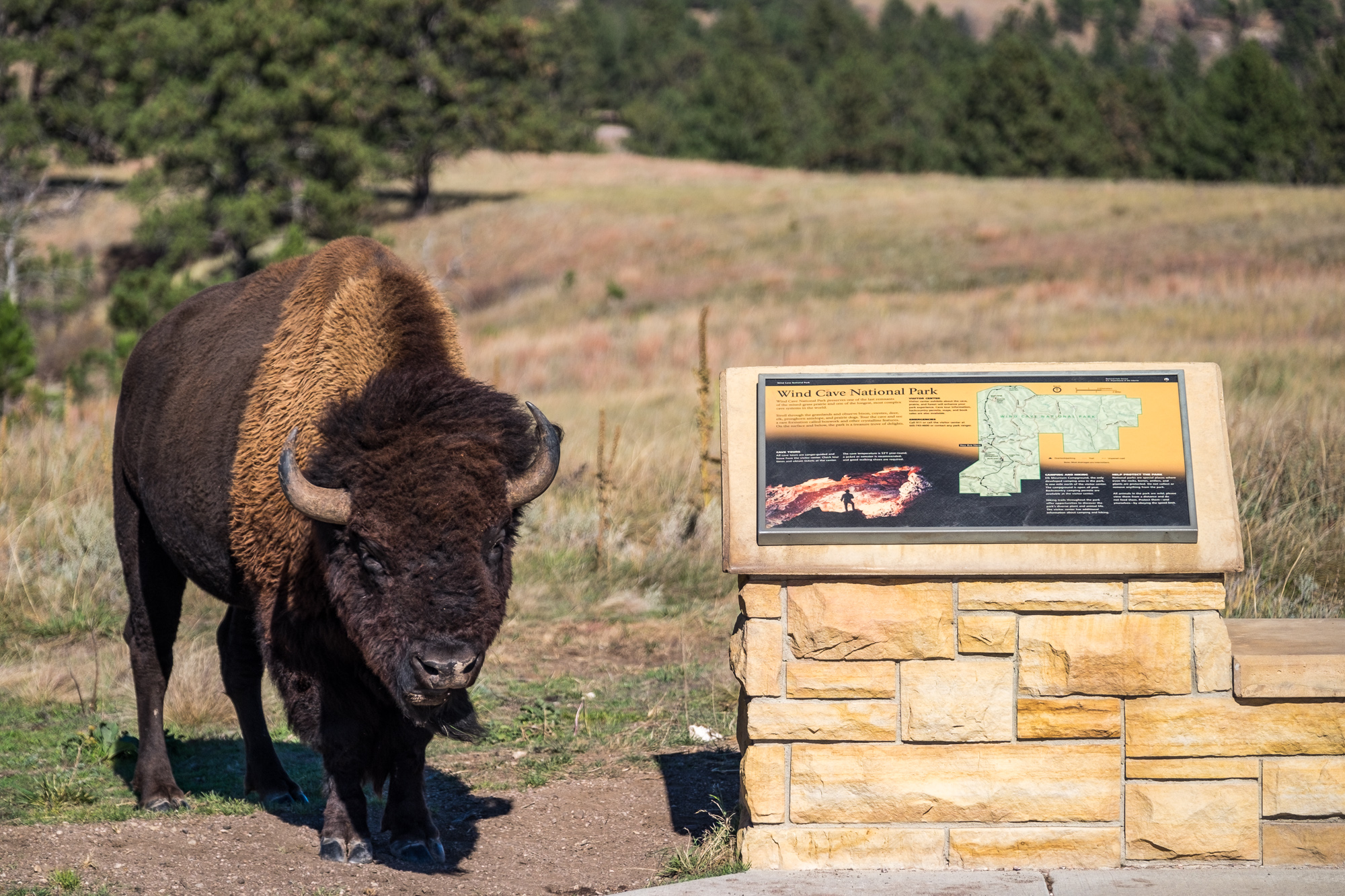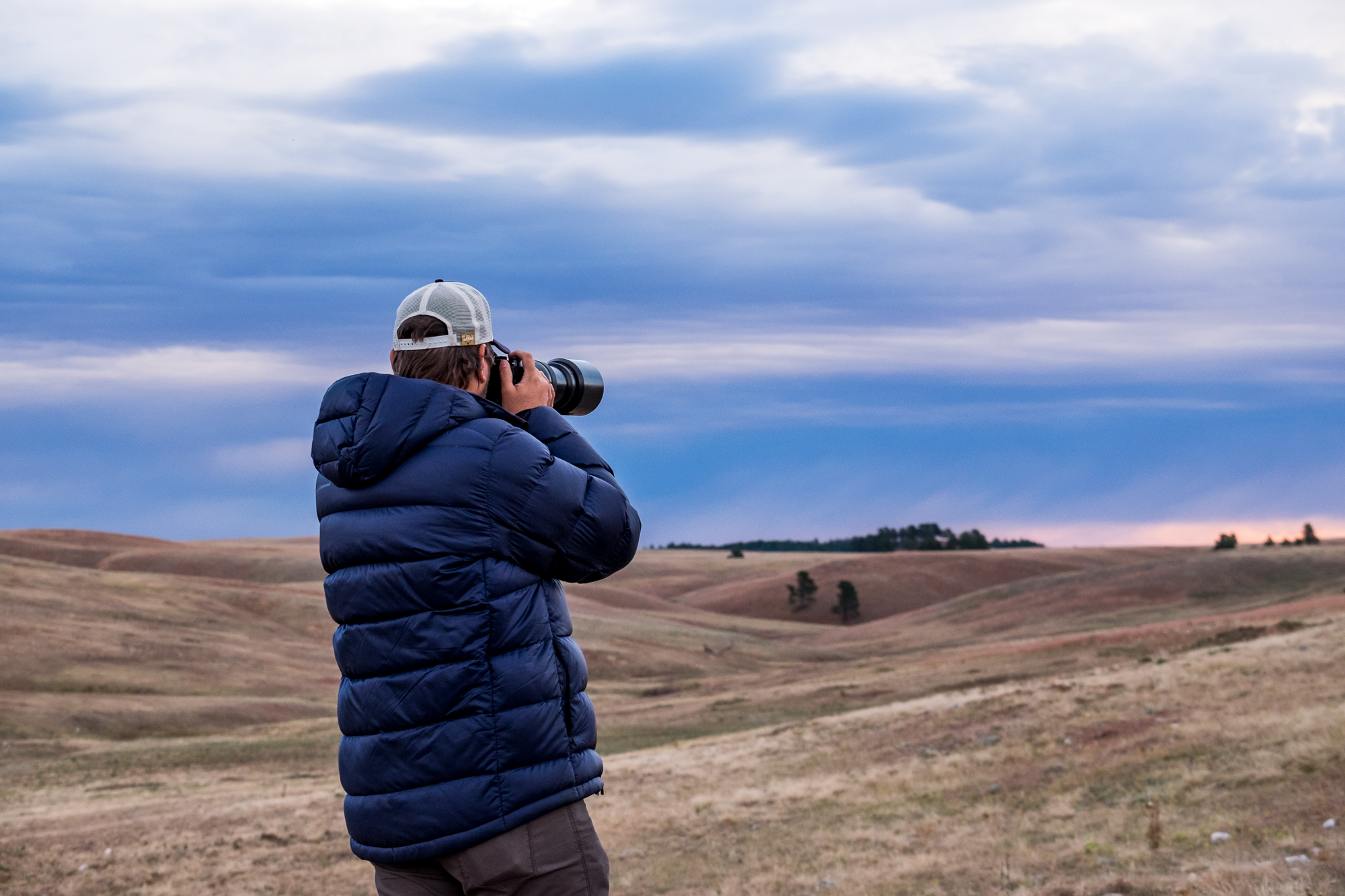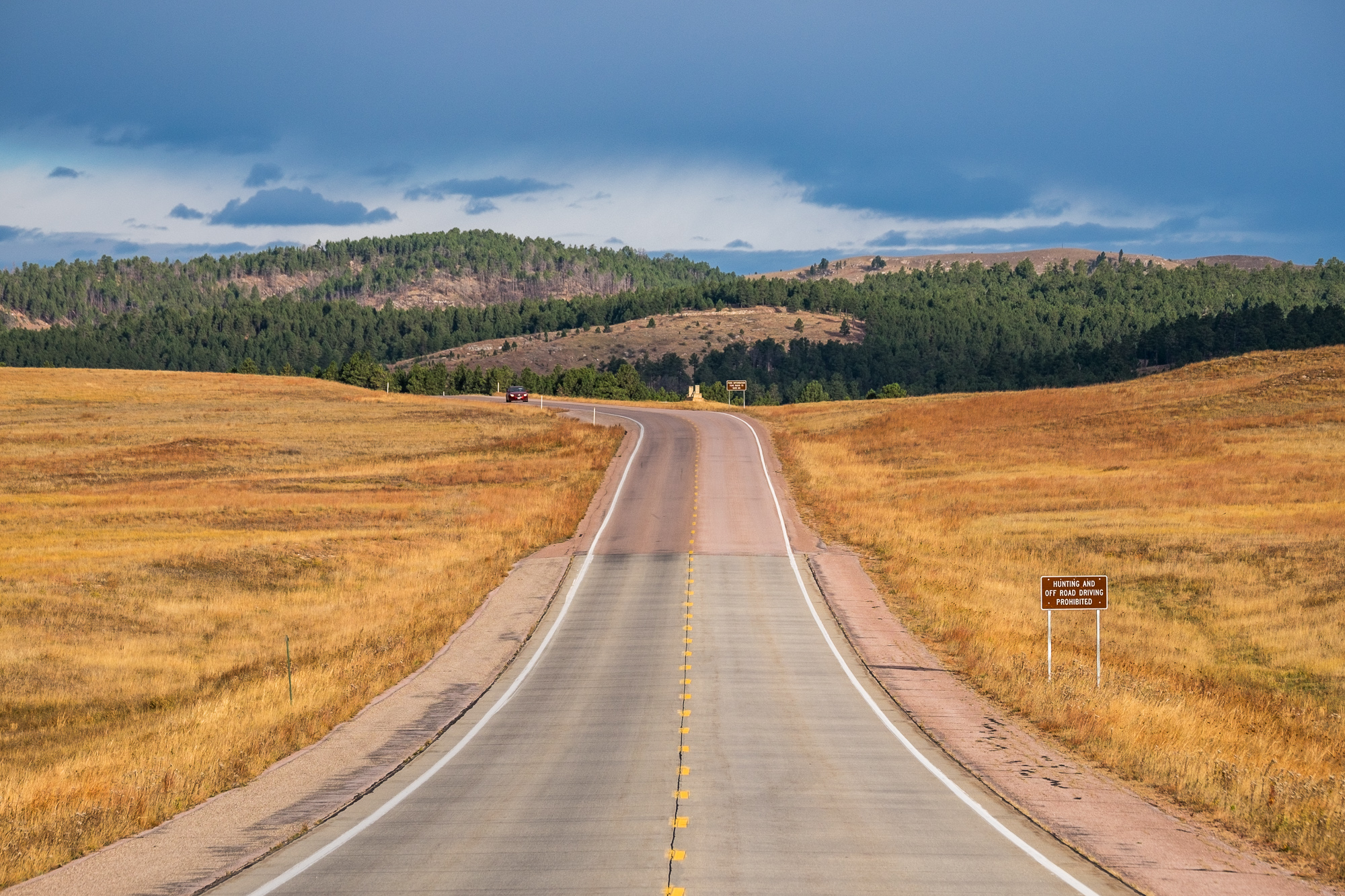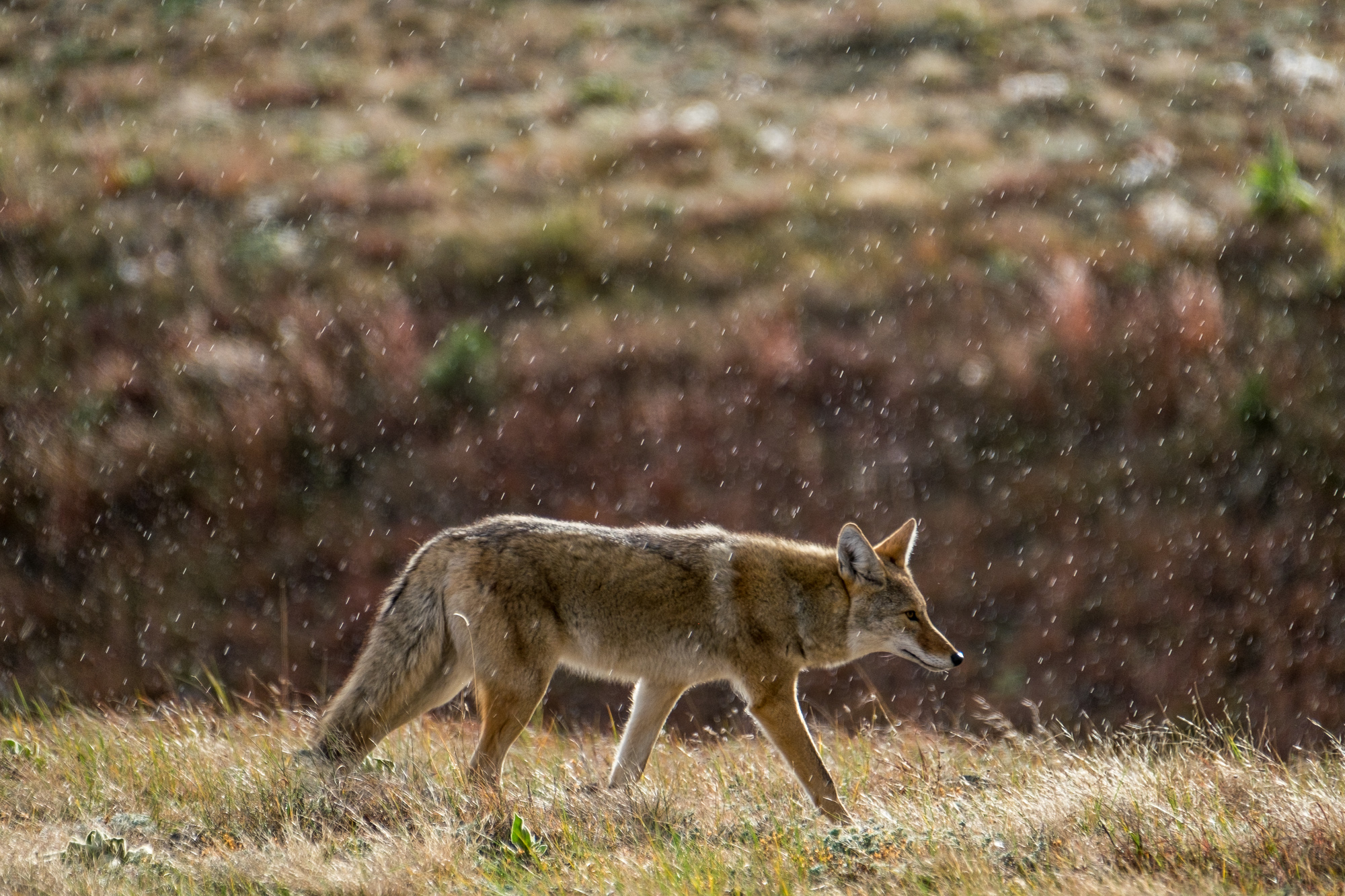Wind Cave National Park, South Dakota, USA | Park 45/59
“The cave you fear to enter holds the treasure you seek. Fear of the unknown is our greatest fear. Many of us would enter a tiger’s lair before we would enter a dark cave. While caution is a useful instinct, we lose many opportunities and much of the adventure of life if we fail to support the curious explorer within us.”
Two Worlds in One: Wind Cave National Park in South Dakota
Wind Cave is America’s 8th national park and it was the first in the world to be established to protect a cave system. Underground, there are more than 140 miles of mapped cave passages, twisting through a subterranean maze that features the finest and largest sampling of boxwork formations found anywhere in the world. Above ground lives a vast mixed-grassland ecosystem and wildlife refuge where diverse populations of prairie animals roam freely.
Wind Cave National Park in South Dakota is one of those rare parks where the below- and above-ground attractions are equally thrilling to experience. Whether you are keen on seeing the amazingly complex cave system or wish to watch bison graze on the prairie, all who visit should make an effort to see both to get a full taste of what this unique place has to offer.
In this article, we've taken a closer look at both areas, each of which that could stand strong on their own as individual national parks.
Exploring underground in the first cave to be protected by the U.S. National Park Service.
A bison crosses U.S. Hwy. 385, the main thoroughfare through Wind Cave National Park.
Below Ground
Heading into the cave with one of the Wind Cave park rangers.
Just as no two landscapes are the same, no two cave systems are the same. Age, climate, moisture, microorganisms, erosion, and Earth’s tectonic activities are just some of the things that affect what exists underground. Most caves have some collection of stalactites, stalagmites, flowstone, popcorn, curtains, cave bacon, and other formations; complements to additional features and/or superlatives created by their own unique environments that give each cave its own distinction—the one similarity being that they all live beneath Earth’s surface, and are magically teed up for us to explore for only a few of dollars and during the space of one day.
In Mammoth Cave in Kentucky, you'll find the world’s largest mapped cave system. In Carlsbad Caverns in New Mexico, there are intricate and decorative patterns lining what we thought to look like a geologic cantaloupe. Lehman Caves in Nevada’s Great Basin National Park houses rare formations called “shields.” Near Wind Cave at her sister site, Jewel Cave, the ceilings are decorated with jewel-like “frostwork.” Wind Cave is home to what is called “boxwork," a honeycomb-like formation made of calcite that is rich here but not elsewhere on the planet. Its rarity has made the area one that has enticed scientific study for over a century. And it isn’t just planetary scientists and researchers that have a deep knowledge of South Dakota’s underground—rangers at national parks that protect caves are some of the most schooled of the lot and Wind Cave is exemplary of that. Their mandate is unique in that to be a cave ranger, they are required to possess special skills and training, including knowledge of rescue operations as they pertain to areas that extend far beneath Earth’s surface… making it safe for us to wander into mysterious worlds.
A bison's hot breath steams up a sunrise morning.
Above Ground
While it is the subterranean cave environment that earned this park its name and federal protection, the above ground area made up of mixed-grassland prairie, pine/aspen forests, and riparian grows more exciting to explore each year as wildlife populations continue to increase. Bison, elk, pronghorn antelope (North America’s fastest animal,) coyote, and deer roam freely across landscape while views of the Black Hills sweep in from the distance. Prairie dogs sound off in countless prairie dog towns that exist in the park. Birders delight in spotting species that migrate in from all over North America including the elusive black-backed woodpecker. It’s a bustling community of prairie land wildlife that can be enjoyed any day of the year while hiking or driving through the landscape… and it is a very beautiful landscape. Scrolling hills and wide horizons are adorned by trees, puffy clouds, sunsets, rainbows, and any other number of natural wonders created by unique weather systems making it easy to find visual magic occurring somewhere in your close proximity.
Quotable Images
Fact Box
33,851 acres | The first national park dedicated to a cave system
Official name: Wind Cave National Park
Date established: January 09, 1903
Location: Southwestern South Dakota, in the Black Hills
How the park got its name: Wind Cave was named after barometric wind that moves through the 12 x 10 inch natural cave entrance, which is created by a shift in atmospheric pressure between the cave and its surface.
Iconic site in the park: Oldest, one of the world’s largest, the most complex… there are many superlatives that draw people from around the world to Wind Cave in South Dakota. Native Lakota Indians living in the area have always considered the cave to be sacred and have sought wisdom from its whistling wind which they believe to be an emergence from the underworld to the surface world (and the source of their people.) Settlers who went to the Black Hills area during the Gold Rush were drawn to it for similar reasons, for its mystery and curiosity, and possibly to find riches in its depths. Today, visitors are inspired by the opportunity to forge underground to experience three unique attributes that Wind Cave is best known for: rare and unique boxwork formations, dry wind systems, and its extreme size—Wind Cave is the third longest cave system in the U.S. and the seventh longest in the world.
Accessible Adventure: The above ground area of Wind Cave is a thriving habitat for animals including elk, deer, prairie dogs, pronghorn, American bison, and the critically endangered black-footed ferret. Today, there is a 28,295-acre wildlife sanctuary stretching across the surface of Wind Cave where seeing a wide range of animals is as easy as getting in your car and starting down the road. It is virtually impossible to journey through the area and not spot wildlife while driving along US Hwy 385 and South Dakota Hwy 87, where pull-offs are situated for easy stop-offs when wildlife appears. Primitive roads NPS 5 and NPS 6 travel into less developed northern and eastern areas of the park for a more rugged and secluded experience.
Driving through the park we came upon a perfect rainbow!
Big Adventure: In the northwest area of the park above Beaver Creek, you can head out on a backpacking adventure in search of even greater solitude than what already exists in this relatively quiet park. Hiking through mixed-grass prairie, pine forest, and riparian (where land meets water,) wildlife, plants, vegetation, birdlife, and the increasingly rare sound of silence are your guides. There are established trails ranging from 1-mile to 8.6-miles and hiking off-trail is permitted, enabling backpackers to carve their own adventure. Wilderness permits are required and are free to obtain at the park visitor center.
This map was created by the National Speleological Society and the National Park Service in 2015. It shows all named passages and tour routes that existed at the time, covering 121 miles, organized by color depicting various levels. Today, there are 143.16 miles of mapped passages…a number that will continue to grow as the system is explored.
Did you know…
Wind Cave is the 8th national park to be established and the first to protect a cave. It was signed into law by President Theodore Roosevelt, also known as the “Conservationist President,” in 1903.
Other national parks protecting caves include Mammoth Cave in Kentucky, Carlsbad Caverns in New Mexico, Lehman Caves in Great Basin, and unique talus caves at Pinnacles National Park in California.
Wind Cave is more than 300 million years old, among the oldest caves on Earth.
This is one of the most complex cave systems in the world with more than 143 miles of twisting passageways fitting under 1.2-square miles of land.
It is estimated that 5% of Wind Cave has been discovered and mapped.
Wind Cave is home to 95% of the world’s unique boxwork formations.
The cave was discovered long before its first record in the late 1800s by Lakota Indians living in the Black Hills. It is believed that they never went into the cave as they saw it to be a sacred entrance to other worlds.
If older than 50 years, markings like these are considered to be "historic graffiti" and are part of a place's cultural past.
The first person reported to have entered Wind Cave was an explorer named Charlie Crary who went underground to get a closer look in 1881. Exploration of the cave took off about ten years later under the direction of J.D. McDonald and his son Alvin, who recorded pursuits in diaries recorded between 1891-1893.
The first accounts of non-native activity near the the cave are attributed to Jesse and Tom Bingham, who came upon it in 1881. Legend goes that after hearing whistling sounds from the ground, they drew near, when air from a hole in the ground blew the hat off of Tom’s head, alerting them to the presence of an underground world. Days later when they returned, the wind shifted directions to suck Jesse’s hat into the ground.
Wind Cave is home to 95% of the world's "boxwok" formations.
Modern explorers of Wind Cave generally include geologists, hydrologists, paleontologists, and explorers who map the cave, work on restoration projects, and conduct biologic, geologic, and hydrologic research.
This area is one of the greatest examples of a mixed-grassland prairie in the United States. It is called an ecotone, a place where more than two prairie ecosystems meet. At Wind Cave, it refers to the convergence of tall grasses and short grasses that come together to create an immense and biodiverse habitat for a large cross-section of wildlife species.
A bison framed by the setting sun.
There is a difference between buffalo and bison—buffalo are a species native to Africa; bison—American bison—live only in North America.
There are only four genetically pure free-roaming bison herds remaining in North America—at Wind Cave, in Yellowstone, in Utah, and in Alberta, Canada.
There was a time that more than 60 million bison roamed North America. By the early 20th century, fewer than 1,000 remained. Today, there are 400-450 bison living on the prairie in Wind Cave National Park.
While it seems as though they move quite slow, bison are true beasts—unpredictable, strong, and very dangerous to humans.
Elk can be a challenge to spot as they are widely hunted in park adjacent areas, and if you do spot them, they will most likely scatter when they see you.
A prairie dog hops out of his mound to see what's going on.
The vibrant animal community that exists at Wind Cave National Park today has been a long time coming. At the turn of the 20th century, wildlife populations became nearly extinct due to excessive hunting and loss of habitat as farms, ranches, and other development grew in the area. In 1912, the Wind Cave National Game Preserve was established to reintroduce dwindling species to their native habitats. Efforts have been proven successful as populations are on the steady rise and with the return of the critically endangered black-footed ferret.
There are 30 miles of established hiking trails in Wind Cave National Park.
Wind Cave is 41 miles (about one hour by car) from Mount Rushmore National Memorial; 36 miles to Jewel Cave National Monument; and about 145 miles to Badlands National Park.
South Dakota is home to The Great 8: Deadwood, Crazy Horse Memorial, Jewel Cave National Monument, Custer State Park, Mount Rushmore National Memorial, Missouri River National Recreational River, Badlands National Park, and of course, Wind Cave National Park.
There were approximately 617,000 visitors to Wind Cave in 2016.
Meeting with a coyote at dawn.
Wally the Airstream in his element driving through Wind Cave National Park in South Dakota!


































































